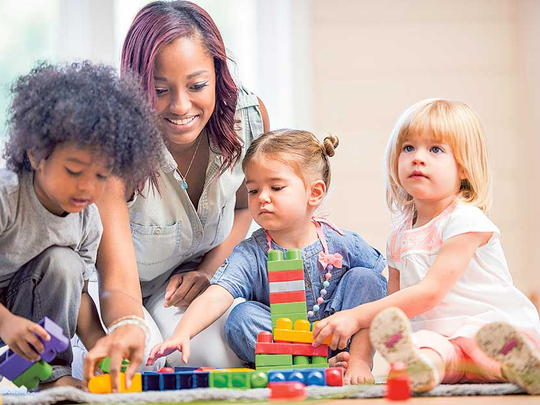
Dressed in a suit and with résumé in hand, my then-boyfriend, now husband, arrived at Houston’s international airport alone on Thanksgiving Day to meet my parents for the first time. This moment, which had been three years in the making, began on the day we first met when he was the chief resident in our paediatric residency programme and I, the intern. Unknown to us, that day would begin an ongoing journey of breaking down barriers, uniting communities and understanding how to parent a biracial child.
To be quite honest, I did not expect to choose someone who looked different from me. Growing up in India and the Middle East, within tight knit Hindu Indian communities, my goal was to start a life with someone who would carry on the same cultural values and beliefs. But when I met my husband, who was brought up in the African American Baptist church, our differences paled in comparison to our similarities. And those parts of the other that were new to us, we were willing to understand.
So when my husband called my parents one day and asked if he could visit them, his goal was to show them our shared understanding. He insisted on making the trip alone. And by the end of the three-day trip, my parents had listened. We were married exactly one year later on Thanksgiving weekend.
Our wedding brought two very different communities together through the shared passion for dance, food and love. At the culmination of that day, I thought that we had overcome our barriers and bridged our differences — that is, until we had a child.
My daughter, just over 2 years old, is understanding the differences between the cultures that create her identity. Within these two years, she has experienced the peaceful chanting found in a Hindu temple and the uplifting hymns of the Baptist church. She has listened to the bold beats of bhangra music and also the soulful tunes of R&B. Within the same day, she will call her paternal grandmother “gramma” and her maternal grandmother “nani”. Whereas before I wanted so desperately to show my parents how we are similar, I now want to show my daughter how we are different.
It is through understanding our differences that we have learnt to peacefully coexist. This is what I want my daughter to see. I want her to notice race, gender, colour, ethnicity, body types and religions. I want her to accept, understand and celebrate those differences because she is a product of the unity that can exist in diversity.
Several studies conducted by psychologists Phyllis Katz and Jennifer Kofkin in 1997 showed that infants as young as six months old stared significantly longer at an unfamiliar face of a different race than an unfamiliar face of the same race. Infants process new information through a prolonged gaze. This tells us that children notice race. But we know they aren’t born racist. It is only when we are silent about our differences that they develop negative connotations to the subject of race. And it doesn’t take too long after that for bias to set in.
The only way that we can change the current rhetoric of race in America is through our children, and it is never too early to talk to your child about race. I have purposefully chosen to live in a diverse area of the country because it is important to me that my child interacts with others who are different from her. Instead of being “colourblind,” I want my daughter to see the world in Technicolor. I want her to ask questions and I look forward to those conversations. My goal is for her to understand how all the different parts of humanity fit into the grand rhythm of life. Society will want to label her, but I hope that she views the world through the lens of an open mind, curious to learn about new cultures and ways of life.
According to census 2010, the multiracial population in America had increased by more than 30 per cent since 2000. As a paediatrician, I have seen a greater number of multiracial families walk through my clinic doors and this gives me hope. It tells me that not only are people understanding their differences and choosing to build lives around them, but that there are also more children who are seeing differences as a unifying force within their own homes.
Eight years ago, my husband walked through the airport on a mission to break down barriers by highlighting our similarities. And now with our daughter, we are building bridges through our differences.
–Washington Post
Smita Malhotra is a mother, paediatrician and writer.












